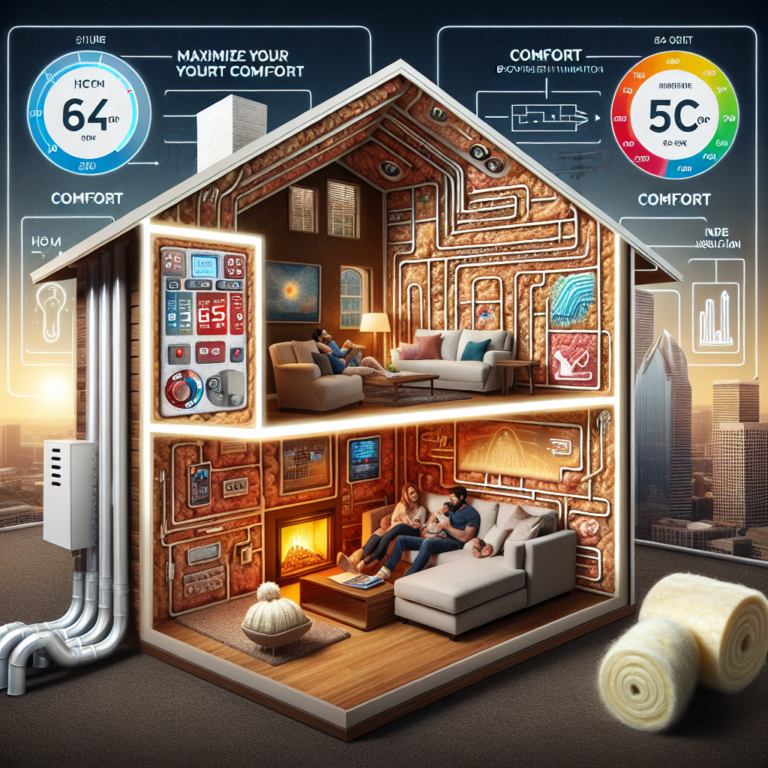Transform Your Vaulted Ceiling with Blown In Insulation: Say Goodbye to High Energy Bills!
Table of Contents
H2 Introduction
H2 Benefits of Blown In Insulation for Vaulted Ceilings
H2 How to Properly Install Blown In Insulation in a Vaulted Ceiling
H2 Common Mistakes to Avoid When Using Blown In Insulation for Vaulted Ceilings
H2 Q&A
H2 Conclusion
H2 Introduction
Vaulted ceilings add drama and spaciousness to any room, but without proper insulation they can become energy sinks. Blown in insulation offers a fast, effective solution for sealing those high, angled spaces. By packing loose-fill materials—like fiberglass, cellulose, or mineral wool—into every nook and cranny, blown in insulation creates a continuous thermal barrier that keeps heat where it belongs. In this article, we’ll explore how blown in insulation transforms a drafty vaulted ceiling into an energy-efficient centerpiece, slashing your heating and cooling costs and improving year-round comfort.
H2 Benefits of Blown In Insulation for Vaulted Ceilings
H3 Superior Coverage in Hard-to-Reach Areas
The angled rafters and tight corners of a vaulted ceiling pose installation challenges for traditional batt insulation. Blown in insulation, however, conforms perfectly to every crevice and gap. A specialized blower injects loose fibers deep into the ceiling cavity, delivering a consistent R-value across the entire surface without tearing or compressing.
H3 Enhanced Energy Efficiency
High ceilings increase the volume of air your HVAC system must condition. Even small voids in insulation lead to significant heat loss or gain. Blown in insulation seals these leaks, creating an airtight envelope that reduces temperature fluctuations and prevents conditioned air from escaping. Homeowners often report energy savings of 15–30% after adding blown in insulation to vaulted ceilings.
H3 Better Soundproofing and Moisture Resistance
The open expanse of a vaulted ceiling can amplify noise and echo. The dense fibers of blown in insulation absorb sound waves, creating a quieter living space. Many blown in materials are also treated to resist moisture, helping to prevent mold and mildew—especially important in humid climates or in roofs prone to condensation.
H2 How to Properly Install Blown In Insulation in a Vaulted Ceiling
H3 Step 1: Prepare the Space
Clear the attic area of debris, stored items, and dust. Verify that soffit and ridge vents are unobstructed to maintain proper roof ventilation. Wear protective gear—gloves, goggles, and an N95 mask—to guard against airborne particles.
H3 Step 2: Calculate Insulation Requirements
Determine the recommended R-value for your climate zone. For vaulted ceilings, you may need R-30 to R-60. Consult local building codes or an insulation professional to calculate the depth of blown in insulation required to achieve your target R-value.
H3 Step 3: Create Barriers and Access Points
Use plastic sheeting or cardboard to protect rafters, wiring, and fixtures from overfill. Drill small access holes—about two inches in diameter—into the ceiling deck at regular intervals. These holes provide entry points for the blower hose into the rafter cavities.
H3 Step 4: Blow in the Insulation
Position the blower machine outside or near the attic access. Feed the insulation through the hose and begin at the farthest point from the entry. Move systematically, filling each cavity evenly. Periodically check depth with a marked stick to ensure consistent coverage.
H3 Step 5: Seal and Clean Up
After achieving the desired depth, patch each access hole with a backer board and sealant to restore the ceiling’s integrity. Remove protective barriers, vacuum loose fibers, and dispose of waste in accordance with local regulations.
H2 Common Mistakes to Avoid When Using Blown In Insulation for Vaulted Ceilings
H3 Skipping Air Sealing
Insulation alone cannot stop air leaks. Before blowing in insulation, seal gaps around light fixtures, plumbing vents, and wiring penetrations with foam sealant or caulk.
H3 Overpacking or Underfilling
Too much insulation can compress and lose its R-value; too little leaves cold or hot spots. Follow manufacturer guidelines closely and use depth markers to ensure accurate installation.
H3 Ignoring Ventilation Needs
Blocking soffit or ridge vents with insulation can lead to moisture buildup and roof damage. Install baffles to maintain airflow from soffits to the ridge and prevent heat and moisture accumulation.
H2 Q&A
Q: What exactly is blown in insulation?
A: Blown in insulation consists of loose, lightweight fibers—often cellulose, fiberglass, or mineral wool—installed with a blower to fill cavities in walls, floors, and vaulted ceilings.
Q: How long does the installation take?
A: Most vaulted ceiling installations take one to two days, depending on attic access, ceiling size, and the amount of existing insulation to remove or augment.
Q: Will blown in insulation settle over time?
A: Quality materials are designed to resist settling. Properly installed, blown in insulation maintains its R-value and coverage for decades.
H2 Conclusion
Transforming your vaulted ceiling with blown in insulation is a smart investment in comfort, energy savings, and home value. By sealing every angle and void, blown in insulation creates an efficient thermal barrier that keeps your living space cozy in winter and cool in summer. Say goodbye to high energy bills and hello to a quieter, healthier home. Embrace blown in insulation today and enjoy immediate returns in comfort and cost savings!












